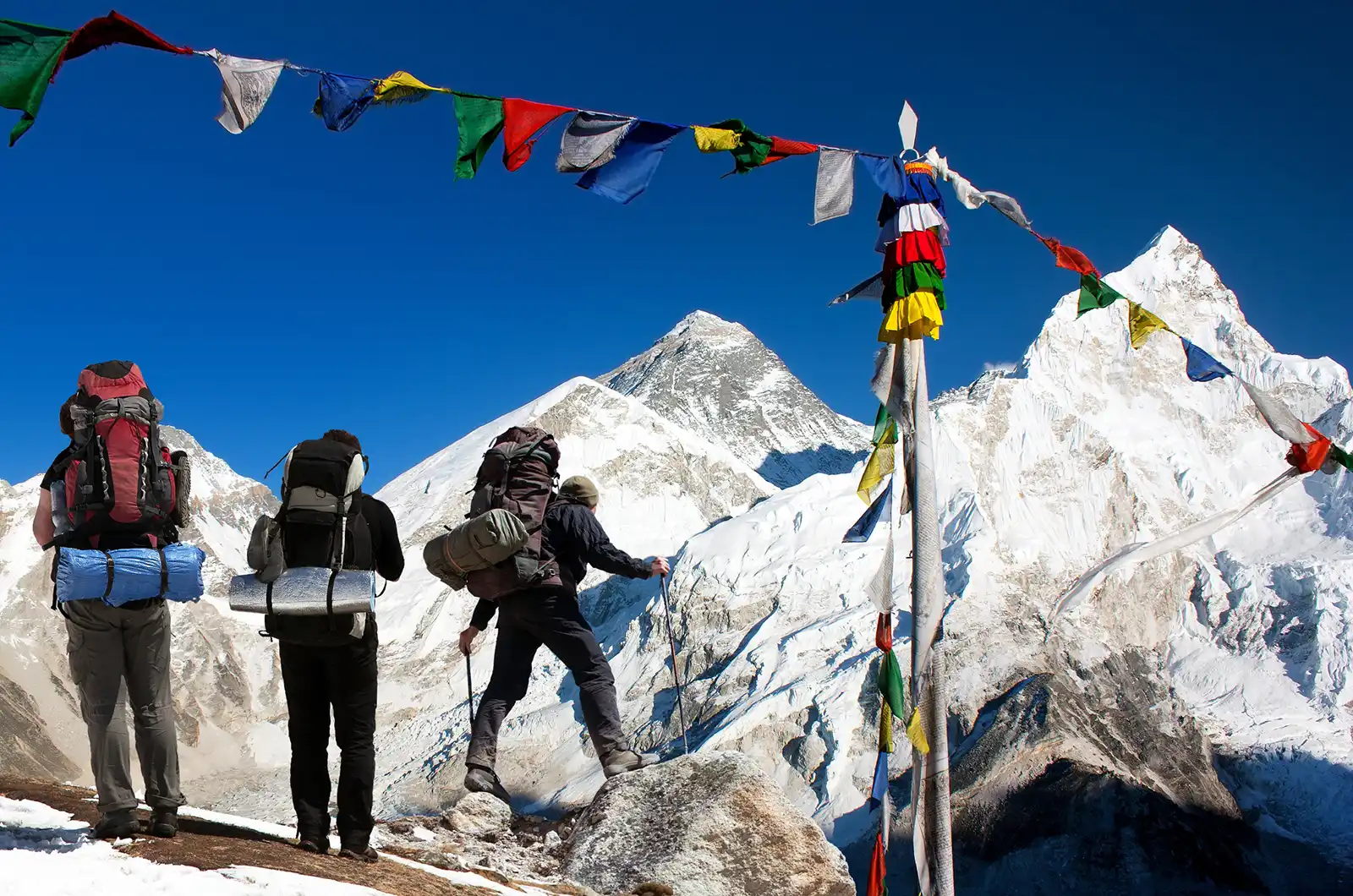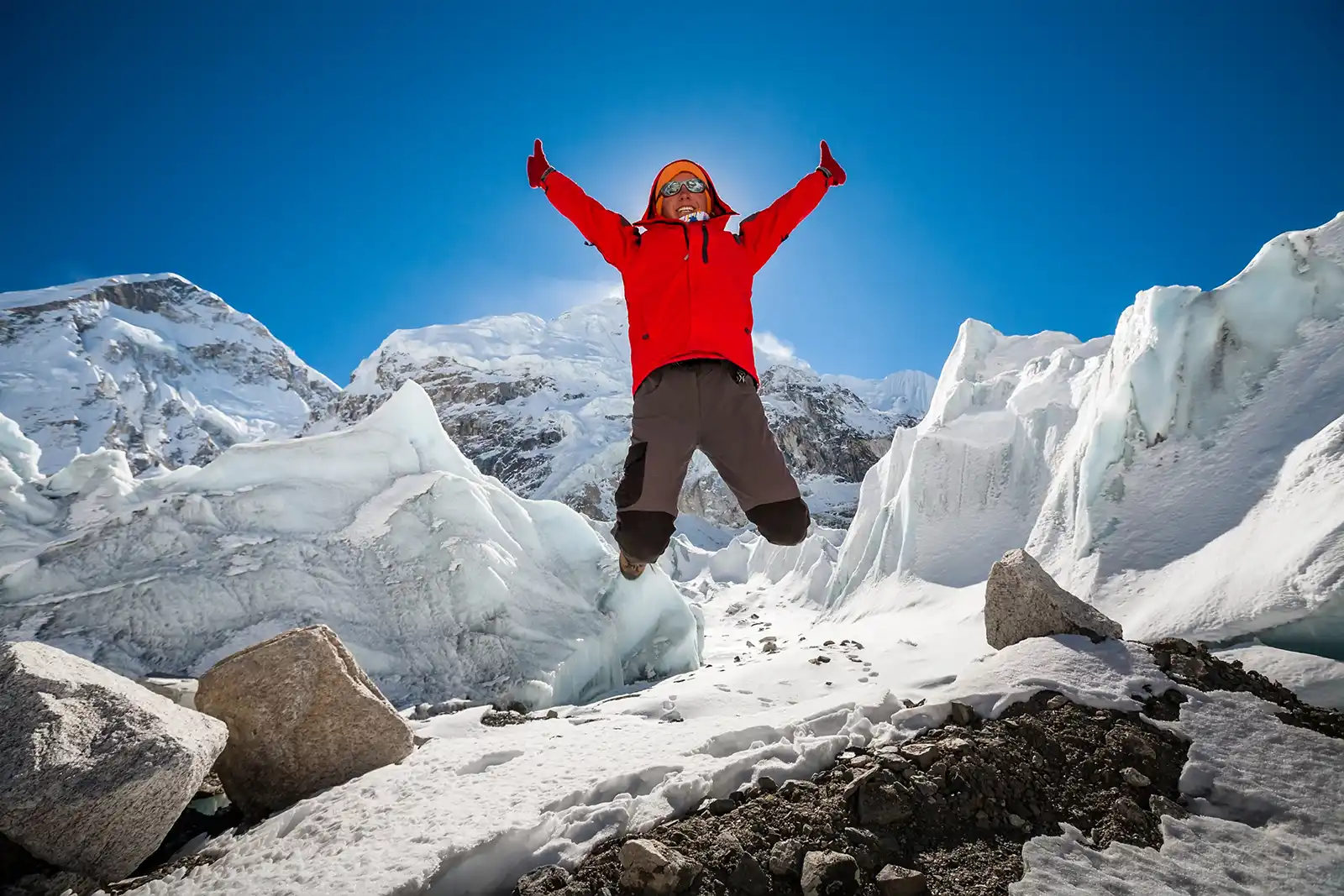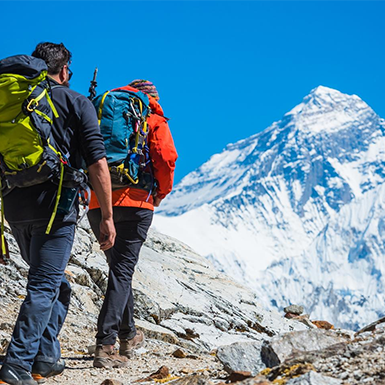This article is a must-read for anyone planning to trek to Everest Base Camp for the first time or lead a group trek in the Himalayas. It provides valuable information and guidance on trekking the Everest Base Camp safely and successfully.
Many people avoid planning a trek to Everest Base Camp due to the high altitude, rugged terrain, and thin air. The risks of high altitude sickness and insufficient knowledge of the mountain can also be daunting. The lack of information on the geography, changing weather conditions, and other factors can pose a significant risk. Due to these challenges, numerous trekkers have lost their lives in this popular trekking area in the past decade.
AMS is a significant risk for trekkers at Lobuche or Gorakhshep, often requiring the purchase of an oxygen cylinder from hotels for over $300 per night. However, this may not be enough to regain health, and guides may suggest helicopter rescue to a Kathmandu hospital, costing around $4500/$5000 from Lobuche and Gorakshep, respectively.

While many trekkers have medical and evacuation insurance, claiming refunds can be demanding. To claim insurance, you must inform your insurer before taking a helicopter service, and a local doctor’s recommendation can be helpful. The doctor’s report, Sagarmatha National Park Permit, and Trekkers’ Information Management System (TIMS) card can be used as proof of insurance claim.
Trekking the Everest Base Camp with an Agency
Solo trekking in the Himalayas can be risky due to the unfamiliar and rugged terrain. Hiring an experienced local guide from a government-registered trekking company is recommended to ensure safety. Hiring a guide from the entry point or along the way can be risky, as you may not have complete information about their experience and background. There is a possibility of illegal activities, and you would bear the entire burden of the guide. In the event of an accident, you would be responsible for medical and helicopter rescue expenses, or if the guide passes away, you may need to compensate their family with around USD 10,000.
We highly recommend hiring an experienced guide from a trekking company for safety. A trekking guide knows the geographical location, culture, history, and trekking trails and can effectively use available resources to ensure customer safety. They play a vital role in providing an enjoyable trekking experience for customers and their staff. Every company has insurance for their staff, and insurance companies will cover all expenses if the guide is involved in an accident.
Responsible Customers care for Everest Base Camp Trek
During the trek, the guide will suggest taking it slow and drinking at least 4 liters of water daily after reaching 2500 meters of altitude. On acclimatization days, the guide may take you to higher altitudes to prevent mountain sickness and ensure a good night’s sleep upon returning to the lodge. Guides may provide items to help with altitude sickness and offer tea, coffee, and garlic soup to keep the body warm.
Guides are knowledgeable about the symptoms of mountain sickness and will monitor your condition for headaches or tiredness. Depending on your condition, if you start to experience mountain sickness, the guide will decide whether to climb up, rest, or go down. They may use their porter or local resources to bring you to lower altitudes and arrange for helicopter rescue to visit a hospital in Kathmandu if necessary. The company will assist in collecting the necessary documents to claim insurance.
When to trek to Everest Base Camp?: Best time
Trekking in Nepal is possible throughout the year, as there are four distinct seasons, each offering unique attractions in different regions. The seasons are classified as follows:
Autumn (September to November)
Autumn, the post-monsoon season, is considered the best time to trek in Nepal’s Himalayan region due to its favorable weather conditions. This season offers stable weather with clear skies, providing trekkers with an unobstructed view of the majestic mountain ranges, making it an ideal time for photography.
The mild temperatures during the day and night make it comfortable for trekkers to embark on their journey. The season’s stable weather makes it easier to navigate the trekking routes, reducing the risk of encountering difficult weather conditions.
Autumn is also an ideal time to experience Nepalese culture and tradition. The Nepalese people celebrate various festivals during this time, including Dashain and Tihar. Trekkers can immerse themselves in the vibrant colors, music, and dancing on the streets of Kathmandu and Pokhara. Many temples and monuments hold special ceremonies and offerings, providing a cultural insight into Nepal’s history and tradition.
Moreover, Autumn is the best season for trekkers to fly into Lukla and Jomsom, two popular Nepal trekking destinations. The weather is stable during this season, ensuring a smooth and comfortable flight experience. Trekkers do not have to worry about unpredictable weather conditions leading to flight cancellations or delays during other seasons.
In conclusion, Autumn offers the perfect combination of favorable weather, breathtaking mountain views, and an opportunity to experience Nepalese culture and tradition, making it an ideal time to trek in Nepal.
Winter (December to February)
Winter in Nepal is considered the coldest and driest season, particularly in the higher elevations of the Himalayan region. This season is characterized by frequent snowfall and sub-zero temperatures, making trekking in the high passes challenging. However, it is also the best season for those who want to witness the beauty of snow-capped mountains and clear blue skies. The views of the mountain peaks during this season are breathtaking, and the landscapes are draped in snow, creating a serene and magical ambiance.
While high-altitude treks might not be advisable during winter, many lower-level treks can still be organized that offer panoramic views of the surrounding mountains. These treks are usually less crowded during winter, providing trekkers with a tranquil and peaceful environment.
Furthermore, winter is a perfect time to explore Nepal’s cultural and historical landmarks, particularly in Kathmandu and other cities. The streets come alive with festive decorations and lights during Christmas and New Year, offering an excellent opportunity to experience the festive spirit of Nepal.
In summary, while winter is not the most popular season for trekking in Nepal due to its challenging conditions, it is an ideal time for those who want to witness the beauty of snow-capped mountains and tranquil landscapes. Lower-level treks and cultural explorations provide a great alternative during this season.
Spring (March-May)
Spring is a delightful season for trekking in Nepal due to its pleasant climate, clear skies, and colorful landscape. The hills and valleys of Nepal come alive with blooming flowers such as rhododendrons and magnolias, creating a charming and enchanting atmosphere. The blooming flowers’ vibrant colors, lush green forests, and clear blue skies provide a picturesque view for trekkers to enjoy.
Spring weather is generally mild, making it comfortable for trekkers to explore and hike in the mountains. The temperature is neither hot nor cold, and the clear skies provide a stunning view of the mountains. The moderate daytime and cool temperatures at night make for a comfortable camping experience.
Spring is also an ideal time to visit the national parks in Nepal, as the wildlife is more active, and the flora is in full bloom. Nepal’s national parks are home to rare and exotic species like the snow leopard, red panda, and Himalayan musk deer, providing an excellent opportunity to experience Nepal’s unique wildlife and natural beauty.
In conclusion, spring is a beautiful and comfortable time to trek in Nepal, offering a colorful and enchanting landscape, mild temperatures, and clear skies. It is perfect for novice and experienced trekkers who want to explore the beauty and culture of Nepal.
Summer (June to August)
Summer in Nepal typically lasts from June to August and is characterized by hot and humid weather. While this season can be challenging for trekking in some regions of Nepal, it is still a great time to explore certain parts of the country. One of the significant advantages of trekking during the summer season is the lush greenery that covers the mountains, creating a stunning landscape for trekkers to enjoy.
However, the lower valleys can be rainy and muddy during this season, and it is challenging to walk on some trails. Additionally, the summer season is known for the presence of leeches in some regions, including the Annapurna region. These blood-sucking creatures can be a significant annoyance for trekkers. Still, experienced guides know how to deal with them by applying salt to walking boots and using other methods to keep them at bay.
Despite the challenges, the summer offers unique trekking opportunities and exploring Nepal. Many people choose to visit the high-altitude regions of Nepal during this season, where the weather is more pleasant. This is an ideal time to explore the stunning Himalayan landscape and trek to high mountain passes.
In conclusion, while summer can be a challenging season for trekking in Nepal due to its hot and humid weather and the presence of leeches, it still provides some unique opportunities for exploring the stunning landscapes of Nepal. Experienced guides can help trekkers manage these challenges and make the most of their experience in Nepal.

Also, See:
Fitness level for EBC Trek:
Trekking in Nepal is an exciting adventure requiring reasonable physical fitness and mental strength. Most treks are designed for passionate trekkers who can walk five to six hours daily. Trekking at higher altitudes can be physically demanding, but it can be accomplished with excellent health, a positive attitude, and strong determination. Regular exercises like hiking and jogging can help improve our strength and stability before the trek.
While having prior mountain trekking experience is recommended, it is not mandatory. However, trekkers with pre-existing medical conditions such as heart, lung, and blood diseases should seek advice from their doctors before embarking on a trek. Proper preparation, including an excellent physical check-up, will ensure a safer and more enjoyable trekking experience in Nepal. With the right mindset, physical preparation, and guidance from experienced guides, trekkers can have an unforgettable adventure in Nepal’s stunning mountains.
Accommodation during the Everest Base Camp Trek
While trekking in Nepal, we understand that a comfortable stay is crucial, so we offer various accommodation options to suit your budget and preferences. We provide tourist-standard and luxurious hotels in cities such as Kathmandu, Lukla, Phakding, and Namche. In the trekking area, you can choose from standard teahouses until Namche. However, there are no luxurious hotels beyond Namche, but you will find normal teahouses easily.
The trekking area offers diverse food options, including Western, Indian, and Continental cuisines. Upon arrival, please inform us of any specific food preferences you may have. However, Chinese and Korean foods may not be readily available in the trekking area. It’s important to note that the Sagarmatha National Park has a strict no-killing policy, and porters carry all meats from Lukla. Meats may not always be fresh or frozen, so vegetarianism is recommended during the trek. You can consume lentil soup to provide your body with protein and energy.
We aim to provide a comfortable and unforgettable trekking experience while respecting the local environment and culture.
What should you take for trekking at the Everest Base Camp?
Please remember that your porter can only carry a maximum of 15 kg, so pack wisely. It is essential to bring a warm jacket, a few pairs of trousers, thermal underwear, and a large water bottle for the trek. In addition, it is recommended to bring 2-3 pairs of synthetic fabric t-shirts that wick away sweat, trekking shoes, thick socks, an ear-covering cap, gloves, trekking poles, a camera with extra batteries, a sleeping bag, regular medication, toilet paper, some chocolates, notebooks, sunscreen, polarized sunglasses, and water purification tablets. These items are necessary for a comfortable and safe trek to Everest Base Camp.
Last but not least
The Everest Base Camp Trek is an achievable goal for those with a positive attitude towards trekking who want to experience Mount Everest from a fresh perspective. However, safety and security should be a top priority during the trek. To minimize the risk and ensure a safe journey, it’s recommended to join a reliable trekking agency.
At Peregrine Treks, we have over a decade of experience in mountain tourism and can offer you a safe and memorable trekking experience. Our team of experienced guides and porters is knowledgeable about the region and can assist you throughout the journey. You can trust us to provide the necessary equipment and advice to ensure you are well-prepared for the trek. With Peregrine Treks, you can focus on enjoying the breathtaking scenery and creating unforgettable memories.


